Key takeaways
- Silk dairy alternatives provide a creamy texture and versatile flavors, making them suitable for a variety of dessert recipes.
- Using Silk helps create indulgent treats without the saturated fats and cholesterol associated with traditional dairy.
- Choosing the right Silk product can influence dessert flavor and texture, allowing for creative experimentation in baking.
- Techniques such as gentle folding and proper whipping of Silk products enhance dessert textures, ensuring a satisfying finish.
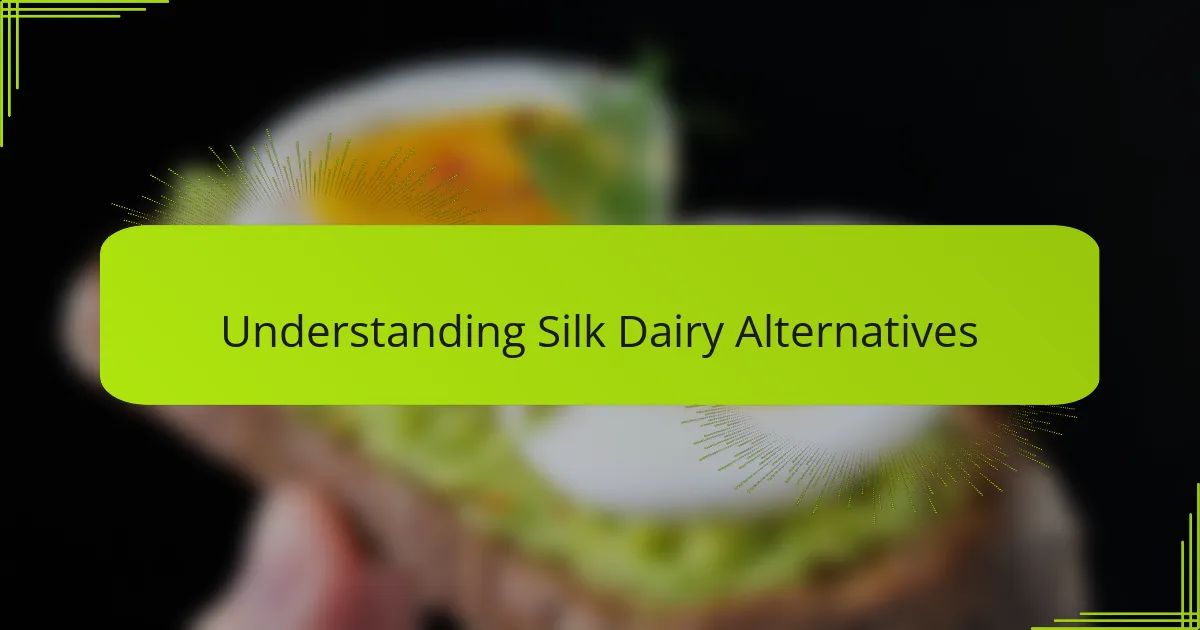
Understanding Silk Dairy Alternatives
When I first discovered Silk dairy alternatives, I was intrigued by how they offered a smooth, creamy texture without any dairy. It made me wonder, could these plant-based options really hold up in my favorite dessert recipes? After experimenting, I realized Silk blends, made from ingredients like soy, almond, and oat, bring a unique flavor and richness that changed my approach to dessert-making.
What’s fascinating about Silk is how they’ve crafted their products to mimic traditional dairy’s versatility. Whether it’s their almond milk perfect for mousse or their soy creamer that whips into luscious frostings, I found myself appreciating how each type offers different qualities. This understanding gave me the confidence to swap out heavy creams and milks without sacrificing taste or texture.
Have you ever felt limited by dietary restrictions or just wanted to try something new with desserts? That’s exactly where Silk dairy alternatives shine. They open up a world of possibilities, allowing me to create indulgent treats that are both satisfying and mindful of different dietary needs. For me, understanding these alternatives isn’t just about ingredients—it’s about embracing creativity and inclusivity in the kitchen.
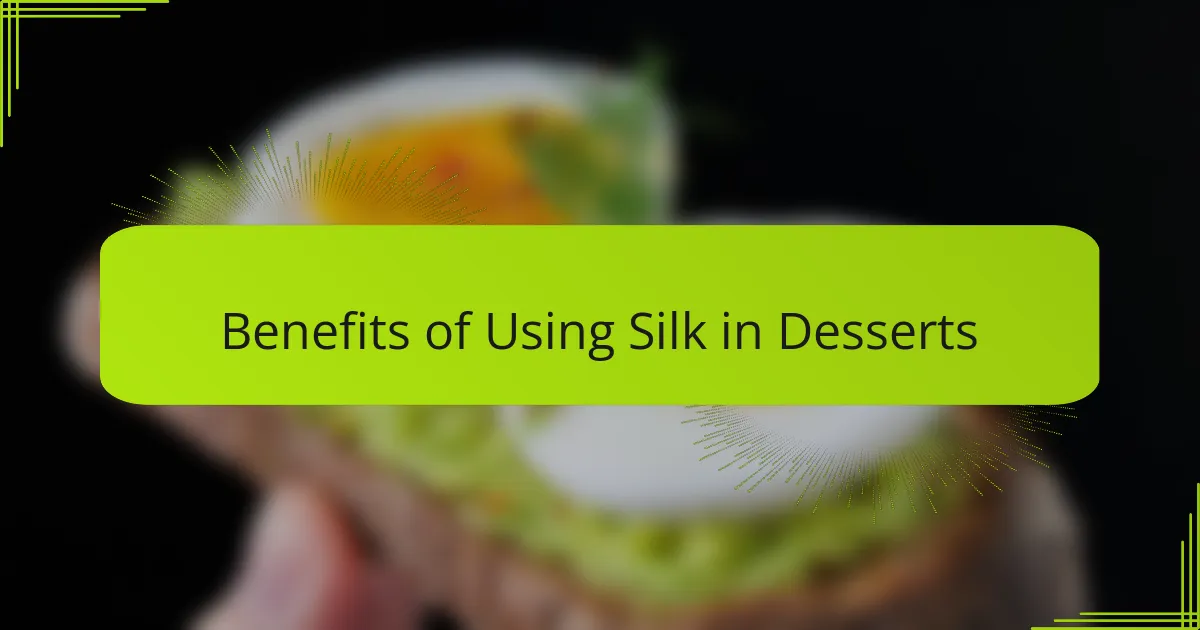
Benefits of Using Silk in Desserts
One of the biggest benefits I noticed when using Silk in desserts is how effortlessly it blends in, giving everything a rich creaminess without the heaviness of traditional dairy. Have you ever struggled to find that perfect smoothness in a vegan or lactose-free dessert? Silk solves that in a way that feels natural and satisfying, which truly changed my baking experience.
Another thing I appreciate is how Silk’s plant-based ingredients add subtle, complementary flavors that elevate my desserts rather than masking them. For example, the hint of almond in Silk almond milk gives a gentle nuttiness to my puddings, making them taste a bit more gourmet without extra effort.
And let’s not forget the health benefits — choosing Silk means I’m cutting down on saturated fats and cholesterol, which feels great knowing I’m making desserts that are kinder to both my body and the environment. In a way, I’ve found that using Silk helps me balance indulgence with conscious choices, without ever sacrificing the joy of a truly delicious treat.
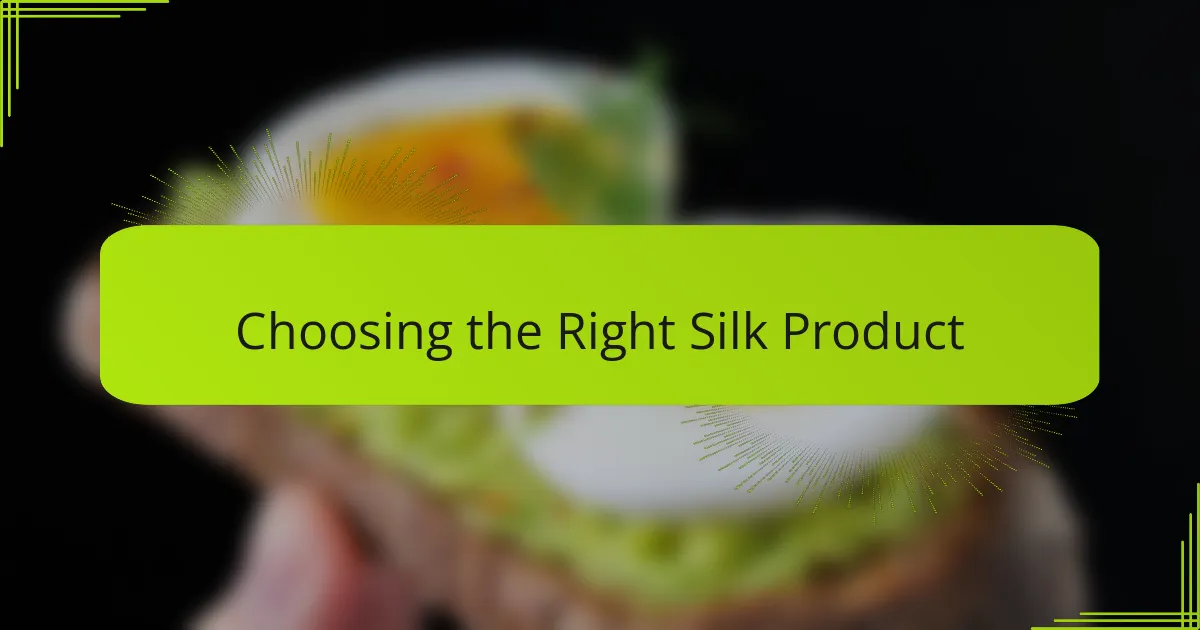
Choosing the Right Silk Product
Picking the right Silk product really set the tone for how my desserts turned out. I remember once using Silk coconut milk in a chocolate tart, and the subtle tropical notes gave it an unexpected but delightful twist. It made me realize that choosing between soy, almond, or oat isn’t just about dietary needs—it’s a flavor adventure waiting to happen.
Have you ever wondered which Silk alternative works best in whipped toppings or custards? From my experience, Silk soy creamer whips up with a lightness that rivals traditional cream, while Silk almond milk adds that cozy nuttiness perfect for puddings and sauces. Knowing these nuances helped me feel more confident experimenting, rather than guessing.
Sometimes, I ask myself if the texture I want is achievable without dairy. That’s where I pay close attention to the Silk product’s fat content and consistency. For rich, velvety desserts, I lean toward Silk creamers, but for lighter treats, their milks do the job beautifully—each choice shaping the final experience in subtle yet meaningful ways.
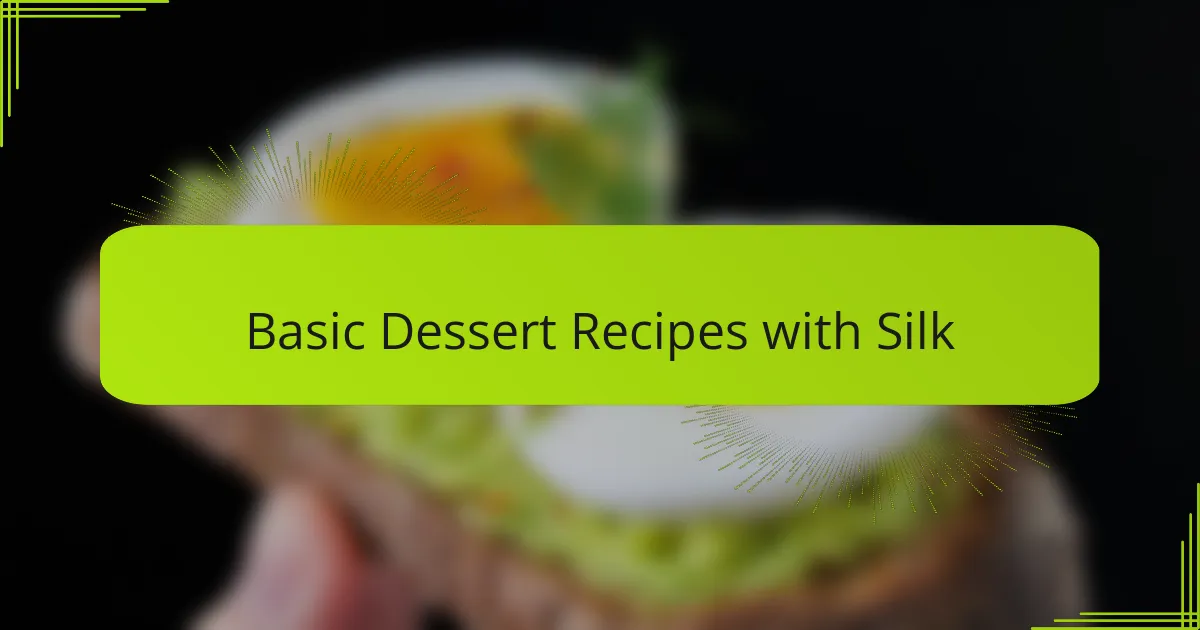
Basic Dessert Recipes with Silk
When I first started using Silk in my basic dessert recipes, I was amazed at how easy it was to swap out cow’s milk without losing that comforting creaminess. Have you ever tried making pudding or custard with a dairy alternative and ended up with a texture that felt off? Silk almond and soy milk changed that for me—their smoothness made my recipes turn out just right, every time.
One of my favorite quick dessert hacks has been blending Silk oat milk into simple cake batters or smoothie bowls. The subtle sweetness adds a gentle lift without overpowering the flavors, which honestly surprised me when I got my first batch to come out perfectly moist and tender. It’s these small wins that make me reach for Silk first when crafting easy desserts.
I also love how Silk products simplify the process of making whipped toppings from scratch. I remember the first time I used Silk soy creamer to whip up a topping for a fruit tart—I was doubtful at first, but it fluffed up beautifully and held its shape. Moments like that remind me how versatile these alternatives can be, even in the most basic recipes, making dessert-making feel more creative and approachable.
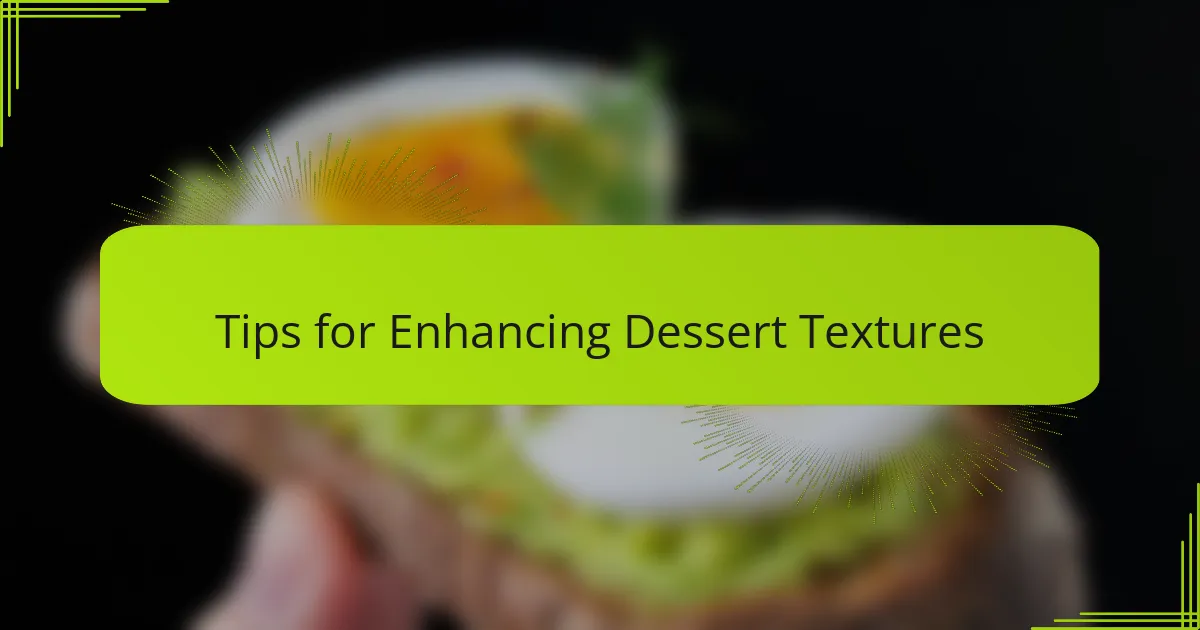
Tips for Enhancing Dessert Textures
Texture can make or break a dessert, don’t you think? I’ve found that when working with Silk dairy alternatives, whipping them just right is key — too much and you risk a grainy finish, too little and the dessert can feel flat. My secret? I usually chill my Silk creamer thoroughly before whipping; it helps achieve that light, airy lift that feels just like traditional cream.
Another trick I’ve learned is to incorporate gentle folding when adding Silk milk or creamers into batters or mousses. It’s amazing how a delicate hand preserves the silkiness and prevents the mixture from becoming dense or clumpy. Have you ever noticed how overmixing can ruin a dessert’s texture? Trust me, patience here pays off with a smooth bite every time.
Sometimes I experiment by combining Silk alternatives with small amounts of natural thickeners like cornstarch or agar agar to give my desserts a firmer yet tender feel. This approach especially comes in handy when making custards or panna cotta. The result? A texture that’s perfectly set but still melts in your mouth—exactly what I’m aiming for when elevating simple recipes into something special.
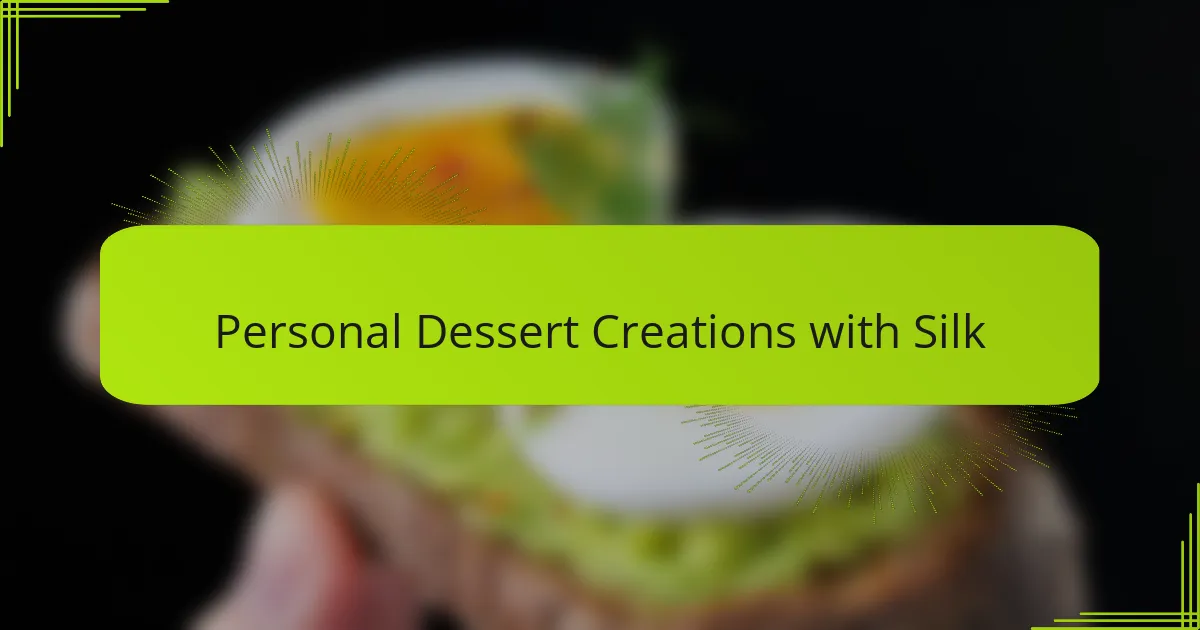
Personal Dessert Creations with Silk
When I create desserts with Silk, it feels like unlocking a new level of creativity. I remember the first time I whipped up a coconut milk panna cotta using Silk—it set so beautifully, with that perfect wobble, and the silky texture was just divine. Doesn’t it amaze you how a simple switch in ingredients can breathe fresh life into a classic dessert?
I often find myself blending different Silk products depending on what mood strikes me. For example, swirling Silk almond milk into a berry compote not only adds creaminess but also a gentle nuttiness that rounds out the flavors in such a subtle, satisfying way. Have you ever had a flavor surprise like that, where you think, “Why didn’t I try this sooner?”
Sometimes, making desserts with Silk feels like a personal experiment in balance. I ask myself how rich or light I want the final dish, then choose between their creamers or milks accordingly. It’s a little moment of mindfulness in the kitchen that turns baking from a task into a joy—one that’s both indulgent and thoughtful, every time.




